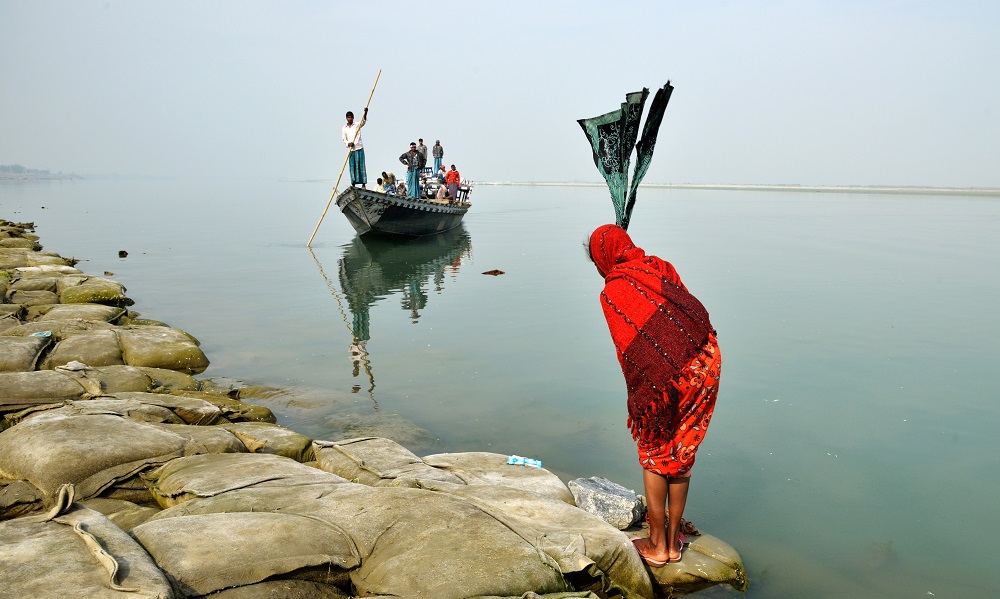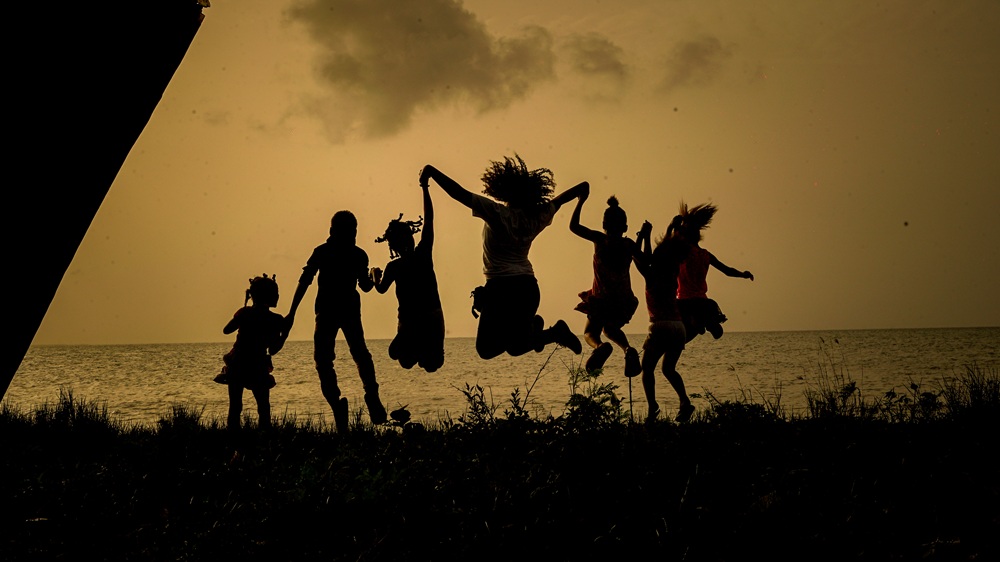Keynote Address by Prof. Walter Kaelin, Envoy of the Chair of the Platform on Disaster Displacement
At the Occasion of the Opening Plenary Event
“Developing a Research and Policy Agenda for Addressing Displacement and Migration
in the Context of Disasters and Climate Change in Africa”
27 April 2021
Among the most destitute internally displaced persons I have ever seen were the former pastoralists I met in Southern Ethiopia. They had lost their animals during the 2016/17 drought in the Horn of Africa. Now, they stayed in the vicinity of a very poor little town. They hardly received any humanitarian assistance, were clearly malnourished, exhausted and in bad shape. And as one of their elders told me, they had no future: he said that even if I gave him lots of animals, he would not go back to his pastoralist lifestyle. He had lost everything twice since 2011 and felt that climate change will make things worse in the future. At the same time, he regretted that his children had missed formal education while moving around with their herds. Thus, he said, they were condemned to a life in poverty. Are these people climate refugees? Or environmental migrants? Internally displaced persons (IDPs)? Or something else? How to define and categorize such persons is not about semantics but has implications for their legal status, their rights, their access to assistance, and so on.
These are highly relevant questions because of large numbers. According to IDMC, 3.4 million people were newly displaced in the context of disasters in 2019 in Sub-Saharan Africa. And the future does not look bright: The World Bank’s Groundswell Report estimates that up to 86 million will become internal climate migrants in Sub-Saharan Africa by 2050 unless we take robust action to mitigate and adapt to climate change and invest in development in accordance with the Sustainable Development Goals (SDGs).
In the following, I would like to present some ideas on how to conceptualize human mobility in the context of disasters and climate change in a way that provides entry points for research that is relevant for law and policy making and brings together such separate and distinct areas of law and policy as climate change, free movement of persons, refugee protection and planned relocation.
The climate change approach
Media and some academics and NGOs call people displaced in the context of climate change climate refugees because they have to flee and are in need of refuge due to global warming. The notion is problematic for at least five reasons:
- The notion of refugee refers to persons fleeing across borders, but the very large majority of people forced to leave their homes in the context of disasters and adverse effects of climate change are internally displaced.
- Concepts based on the notion of flight because of climate change are faced with the problem of attribution: while in many cases drought and sea-level rise can be attributed to climate change, showing that without global warming specific cases of flooding and tropical storms would not have happened is extremely difficult and often contested among scientists.
- Even where it is possible to establish the causal link between a hazardous event and climate change, actual displacement might have multiple causes including poverty, bad governance, or the absence of necessary action to reduce disaster risks and adapt to climate change. This explains why during drought, for instance, not everyone is displaced.
- From a human rights perspective, one has also to ask why people displaced by geophysical disasters such as landslides, volcanic eruptions, or earthquakes or weather-related events not attributable to global warming should remain unprotected. Wouldn’t this amount to prohibited discrimination?
- Finally, there is a fear that the creation of a category of climate refugees would further undermine today’s asylum regime. However, as correctly highlighted by UNHCR, it is possible that also in the context of adverse effects of climate change people have a well-founded fear of persecution on account of their race, religion, nationality, membership of a particularly social group or political opinion because of persecutory acts. They may also be protected by the OAU Refugee Convention because of “events seriously disturbing public order” in a situation where adverse effects of climate change hit a country. While creating a legal category of climate refugees would be problematic, the law and policy on climate change and on environmental issues more generally, are highly relevant for preventing displacement and finding solutions for some categories of displaced people.
The migration approach
IOM’s 2007 working definition reads: “Environmental migrants are persons or groups of persons, who, for compelling reasons of sudden or progressive changes in the environment that adversely affect their lives or living conditions, are obliged to leave their habitual homes, or chose to do so, either temporarily or permanently, and who move either within their country or abroad”. This notion has the advantage of capturing internal as well as cross-border displacement. It also covers non-climate related weather events and geophysical hazards in addition to adverse effects of climate change. At the same time, however, it does not sufficiently capture the multi-causality of such movements. It is, for instance, difficult to determine whether a farmer whose crops are diminishing is moving his family to a city because he feels his children have a better future there or because he feels compelled to do so due to environmental reasons.
The disaster approach
The Platform on Disaster Displacement (PDD) uses the term “disaster displacement” based on the following definition enshrined in the so-called Nansen Initiative Protection Agenda which was endorsed in 2015 by 109 States: “DISASTER DISPLACEMENT refers to situations where people are forced to leave their homes or places of habitual residence as a result of a disaster or in order to avoid the impact of an immediate and foreseeable natural hazard. Such displacement results from the fact that affected persons are (i) exposed to (ii) a natural hazard in a situation where (iii) they are too vulnerable and lack the resilience to withstand the impacts of that hazard.” The third element highlights the multi-causality of displacement. People exposed to hazards and environmental degradation may lack resilience for a multitude of socio-economic and political reasons, including poverty, social and economic marginalization, poor urban planning, expansion of settlements into risk-prone areas, population growth, weak governance regarding disaster risk reduction and management, and violence or armed conflict. As compared to the impacts of the natural hazard itself, these human factors contribute as much as, and sometimes even more, to whether affected people will be able to stay or have to move.
An illustrative example is the case of the Somali pastoralists displaced internally, as well as cross-border, during the 2011/12 drought due to the interaction of drought (i.e., a natural hazard) and famine triggered by factors such as weak clan protection, the lack of food assistance reaching them, and conflict related reasons. A situation where people are unable to cope with the impacts of a hazard amounts to a disaster as defined by UNDRR, that is “a serious disruption of the functioning of a community or a society at any scale due to hazardous events interacting with conditions of exposure, vulnerability and capacity, leading to one or more of the following: human, material, economic and environmental losses and impacts.” This notion of disaster covers sudden-onset events as well as slow-onset processes such as sea-level rise, desertification, and other forms environmental deterioration provided they reach an extent that overwhelms the affected community or society.
If people are forced to move when they are: (i) exposed or expect to be exposed to (ii) a sudden onset natural hazard or slow-onset process of environmental change and (iii) lack the resilience to withstand the resulting impacts, then we can try to reduce each of these elements. In other words, we have multiple tools to:
Help people to stay by:
- Reducing hazards, in particular through the reduction of green-house gas emissions in line with the Paris Agreement;
- Reducing vulnerability and strengthening resilience through disaster risk reduction, climate change adaptation, environmental protection where environmental degradation is caused by human action, and more generally development action in line with the SDGs.
Help people to move out of harm’s way by reducing exposure through:
- Evacuations as a tool of disaster risk management in situations of sudden-onset disasters;
- Migration as a coping mechanism facilitated within countries and across borders, based on (sub-)regional free movement agreements and other forms of migration pathways as recommended by objective 5 of the Global Compact on Migration; and
- Planned relocations as a measure of last resort.
Protect the displaced:
- Protecting IDPs and helping them to find durable solutions (incl. through climate change adaptation measures, e.g. for pastoralists unable to go back to their traditional lifestyle).
- Protecting people displaced across borders and helping them to find solutions (through human rights and migration law as well as refugee law where applicable). This overview clearly indicates that what works best for people affected by disasters and climate change depends on the specific situation and protection needs related to it. It also shows that a multitude of legal areas ranging from environmental and disaster law, to migration and refugee law, as well as human rights law are relevant. Rather than thinking about a new convention which could hardly cover all these issues we should focus on better using, expanding, and further developing what already exists.
The conceptual approach presented here has the advantage of covering all the aspects to be addressed by the four thematic working groups. It also provides entry points for a wide range of researchers and their very different research interests, and, at the same time, helps to bring them together under one conceptual roof.
Photo: 2014 Rakesh Sahai for ADB.





